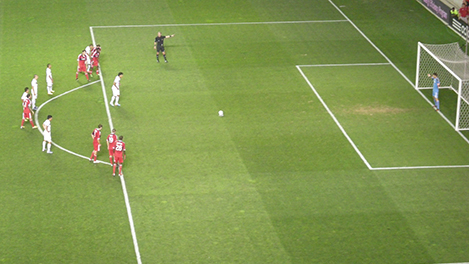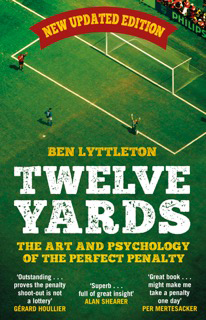 Listen to the excuses of anyone connected to an England team eliminated from a major football tournament after a penalty shoot-out – and as England has one of the worst records in international football, with six defeats out of eight, there are plenty of them - and a pattern soon emerges.
Listen to the excuses of anyone connected to an England team eliminated from a major football tournament after a penalty shoot-out – and as England has one of the worst records in international football, with six defeats out of eight, there are plenty of them - and a pattern soon emerges.
“You can never recreate on the training-ground the circumstances of the shoot-out,” said England coach Glenn Hoddle after a penalties loss to Argentina in 1998. “We trained so much but when it comes to the pressure we are not good,” said boss Sven-Goran Eriksson after Portugal were spot-kick winners in 2006.
Another former coach Roy Hodgson said after the Euro 2012 defeat to Italy that, “you can't reproduce the tired legs. You can't reproduce the pressure. You can't reproduce the nervous tension.”
In a way, they all had a point. You can’t replicate the exact conditions. But nor can you do that in any other sport; does that mean Andy Murray does not practise his second serve, because it won’t be the same as when he’s serving to win Wimbledon? Or that Rory McIlroy doesn't practise eight-foot putts on a putting green because it won’t be the same when the Ryder Cup is on the line?
As part of the research for my book ‘Twelve Yards: The Art and Psychology of the Perfect Penalty’, I spoke to coaches and athletes from many different sports, including golf, tennis, rugby, handball, gridiron and water-polo. All practice assiduously for any eventuality, and the most important word they used to describe their practise was ‘purposeful’.
I was reminded of this word when I saw pictures of England practising for penalties before their eventual defeat to Portugal in 2006. This was the nadir of England’s woeful penalty run, a 3-1 defeat in which only one player managed to score (that was Owen Hargreaves, who had been born in Canada and grew up in Germany). In the picture, around 15 players stand on the edge of the penalty-area, each player with a ball at his feet. They are waiting for an opportunity to step forward and dribble the ball to the spot to take a penalty. Where is the purpose in that? In the match environment, the player has to walk from the centre-circle to the spot, only getting the ball when he arrives there. England’s practise served no real purpose.
Compare this to the Czechoslovakia side which in 1976 prepared for the European Championships by taking penalties on the training-ground while fans’ noise was blasted through loudspeakers so the atmosphere would not be off-putting in the real thing. The final went to penalties and the Czechs beat West Germany 5-3.
Guus Hiddink was coach of South Korea when he took his players to the Gwanju stadium on the day before the 2002 World Cup quarter-final against Spain. Hiddink wanted his players to practise penalties in the stadium, so it would be familiar for them. Instead of walking from the centre-circle to the spot, he made the players walk from the penalty spot at one end of the pitch to the penalty spot at the other end, before taking their kicks. That way, when the real thing came around, the walk would feel shorter and less intimidating. Sure enough, the game went to penalties: South Korea scored all five and beat Spain 5-4.
Purposeful practise also allows the coach the best conditions for him to make decisions over who should take penalties and in what order. It allows players to build up confidence over what, essentially, is as much, if not more, a test of nerve as of technique.
 And for the players who are not used to the pressure, who do not normally take penalties for their clubs, it can be the difference between failure and success. It is impossible to replicate conditions between training and competition 100 per cent, but you can try for 80 per cent; many coaches I spoke to like to add a competitive edge to penalties practise. The losers serve lunch or dinner to the winners after training; or if one player misses, everyone on his team has to go for a long run.
And for the players who are not used to the pressure, who do not normally take penalties for their clubs, it can be the difference between failure and success. It is impossible to replicate conditions between training and competition 100 per cent, but you can try for 80 per cent; many coaches I spoke to like to add a competitive edge to penalties practise. The losers serve lunch or dinner to the winners after training; or if one player misses, everyone on his team has to go for a long run.
There are other things England players can do to end this traumatic run from 12 yards; they can take more time after the referee blows his whistle to denote the penalty can be taken; they can be given a strategy to know how to react if one of them misses; they can keep looking at the goal and goalkeeper and not turn their backs on the goal after they spot the ball (a sure sign of stress). All these are known success factors that the players could hold onto.
But none will work if the players do not practise with purpose in training. There’s a difference between preparing for penalties and practising penalties. England fans will hope their team's managers have worked that out.
The updated version of Twelve Yards is out now in paperback.

Rate and Review
Rate this article
Review this article
Log into OpenLearn to leave reviews and join in the conversation.
Article reviews